Abstract 8/2013
Table of content
Andrzej Brzeziński, Karolina Jesionkiewicz-Niedzińska, Agnieszka Rogala – The advantages and disadvantages of “Park and ride” system on the example of the Warsaw agglomeration
Sławomir Czerwiński – Park and ride system in Wrocław – an example with the car park city stadium
Igor Gisterek – Alternative mean of metropolitan transportation for Wroclaw
Bąk Radosław – Green arrow dilemmas
Michał Wójcicki – Railway project „Stuttgart 21”
Abstracts
Andrzej Brzeziński, Karolina Jesionkiewicz-Niedzińska, Agnieszka Rogala
The advantages and disadvantages of “Park and ride” system on the example of the Warsaw agglomeration
Abstract: The growing number of cars entering the city centres causes reduction of the quality of transport systems and the quality of life, mainly due to traffic congestion, air pollution and noise. To counteract such negative phenomena, actions contributing in reducing of car travel demand are required. One method is to encourage the use of the Park and Ride (P + R/B + R) system, which is a combination of travel to be completed individually (by car/bike) and by a public transport with a change in transport node, held mainly in the corridors leading to the radiating city centers. The article gives the results of the research and experience of the functioning of the P + R system in Warsaw and the Mazovia region. It describes the intensity of use of the system, operating and investment costs and preferences of users. Broader impact of the P+R on the transport system has been analysed. Conclusions and recommendations can form the basis for decisions on the future development of the P + R system in Poland and can be used for analysis and planning of urban and regional transport systems.
Key words: system Park & Ride, P+R, B+R, interchange nodes, modal split, travel behaviors.
Sławomir Czerwiński
Park and ride system in Wrocław – an example with the car park city stadium
Abstract: This paper presents an analysis of the territorial origin and the number of drivers using the car park at the hub of Wrocław park and ride system. It also indicates the location of alternative parking space hubs. Research objectives were implemented on the basis of quantitative data from the daily monitoring of park and ride car park located at the Municipal Stadium in Wrocław, analysis map of the transport system and the Wrocław public transport, contained in the Study of Conditions and Directions of Spatial Development (2010). In the paper experiences in planning and operation of parking hubs in Western Europe and the USA are also included. The main outcome of studies indicates that in Wrocław it is needed to revise the current plans for the interchange parking location. There is no doubt that they should work within the already existing objects of a service function providing parking facilities (example: large–commercial buildings, sports, tourism, market places, cemeteries). This requires implementation of a comprehensive transport policy, including a significant improvement in the quality of public transport, particularly transit times. This confirms analysis of the parking lot at the Municipal Stadium, which despite the good location and the regional impact area is not used in full, as a parking interchange.
Keywords: car interchanges, area of impact, location, P+R
Igor Gisterek
Alternative mean of metropolitan transportation for Wroclaw
Abstract: In both scientific and daily press from time to time articles concerning the feasibility of construction of underground metropolitan railway in Wrocław are appeared. Recently Biuro Rozwoju Wrocławia (Bureau for Development of Wroclaw) has prepared the document presenting a concept of an underground system with 36 km total line length and 34 stations. This paper refers to the implementation of the Aerobus system – an alternative to the mentioned above. General considerations about different urban mass transit system are included, as well as assumptions concerning the needs and possibilities of the eventual new transport line. Both low costs of installation and moderate transport capacity, which better suits the city this size, were emphasized. A proposal of an east – west route has been included. Justification for such a choice has been shown, showing the occurring connections between large traffic generators and important interchanges. Basic calculations concerning travel speed and time have also been performed. The paper ends with a short summary and conclusions.
Keywords: urban transport, underground, Aerobus
Bąk Radosław
Green arrow dilemmas
Abstract: The paper discusses the problem of using special signal that permits to turn on a red (green arrow signal: S-2). Revision of the law regulations concerning signal control design restored the possibility of indication green arrow signal for conflict streams since 2009. As a result of changes to the regulations, at similar intersections green arrow may allow non-collision passage, partially collision or conflict passage. So far, no reliable research has been conducted, allowing estimating influence of green arrow on road safety and driver behavior. As a background, guidelines and design rules of green arrow signal in foreign countries (United States, Germany, France) were presented. The second part of the paper presents preliminary driver behavior-based studies turning right on green arrow. The research results have shown low propensity to use green arrow signal in accordance to the rules. In addition, part of the drivers enters intersection during red signal. On the basis of research and literature study, mandatory and optional criteria for prohibiting collision right turn on green arrow onset were proposed as a support for traffic engineers.
Key words: traffic engineering, signalized intersection, signal control, green arrow, RTOR, road safety
Bartłomiej Derda, Aleksandra Pawlak-Burakowska
AIRPORT CITY concept as an opportunity for regional development
Abstract: This paper presents the concept of the development of airports and their surrounding areas called Airport City. Development of airport infrastructure and neighborhood is nowadays a global trend as a consequence of the fast-growing air traffic in the world. In Poland, the trend of airports development according to the concept of Airport City is noticeable. The article describes the causes that determine the development of airports. Functioning of Hong Kong Airport as aerotropolis and Frankfurt Airport City were discussed. The authors also discussed the opportunities and risks of this trend development in Poland. Plans and actions taken to create Airport City in Warsaw Chopin Airport, Krakow- Balice International Airport and Lech Walesa Airport were discussed. Analysis of foreign and Polish examples of airports forming Airport Cities have been demonstrated as a beneficial phenomenon in every way. From the airport’s point of view, the location of offices, warehouses, retails and hotels contributes to a larger number of passengers, and thus the expansion of the port. From a business perspective, the location of its headquarters close to the airport facilitates business contacts, is cost-effective and provides access to a well-developed transport infrastructure, including rail, road, and in some cases the sea.
Key words: Aerotropolis, Airport City, airport
Michał Wójcicki
Railway project „Stuttgart 21”
Abstract: The purpose of paper is to present one of the largest and the most expensive railway project realized in recent years in Europe. The project “Stuttgart 21” is a complex infrastructure project aimed at reorganization of the railway junction in the city of Stuttgart, the construction of a new underground railway station, reconstruction of long-distance railway lines and as well revitalization of central districts of Stuttgart. The project “Stuttgart 21”, which completion is scheduled in the year 2021 because of the wide and complex range of work and the high investment costs requires involvement of many partners from the public, business and social spheres. Enormous expectations of local and regional authorities as well as national government are laid in the project as far as improvement of internal and external competitiveness of the whole metropolitan area of Stuttgart in its economic, spatial and social dimensions. The paper presents the main features of the project and the expected effects resulting from its implementation. Article describes also the management structure of the Region of Stuttgart and strategic development policy in the area of public transport in the region. An important element of the article is to point the importance of the process of socialization objectives of the project. Various, mostly expensive forms of public participation implemented by the organizers of investment process have resulted with social approval which lack at the initial phase could effect with stop of project’s implementation.
Key words: public transport, regional railway, transportation policy, revitalization of the city, public participation

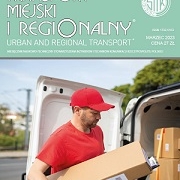 SITKRP
SITKRP 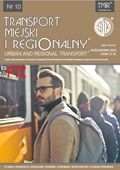 SITK
SITK 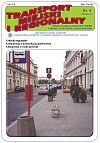 SITK RP
SITK RP 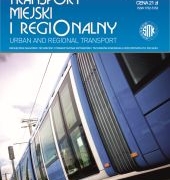 SITK RP
SITK RP 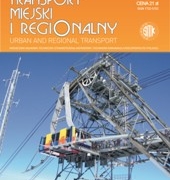 SITK RP
SITK RP 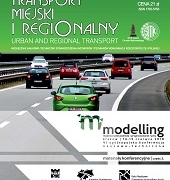

 SITK RP
SITK RP SITK RP
SITK RP